It always starts as jank, doesn't it? You've got that hero you absolutely want to build, despite the opinion held by the community. And you have a vision for it, even though the strategy's been deemed a non-starter. It's just a pet deck, something for Armory.
But then it starts performing. Not "win a Calling" performance, mind you, but you start thinking, "this must be what game design intended." The jank becomes dangerously close to viable.
This is the position I find myself in with Prism, Awakener of Sol. As Heavy Hitters threatens to make my development irrelevant, I feel that I have to put forth what I believe is a truly playable version of a Celestial Fury deck. At risk of exposing my genius for jank, I'm here today with a decklist and strategic guidance for a truly angelic Prism.
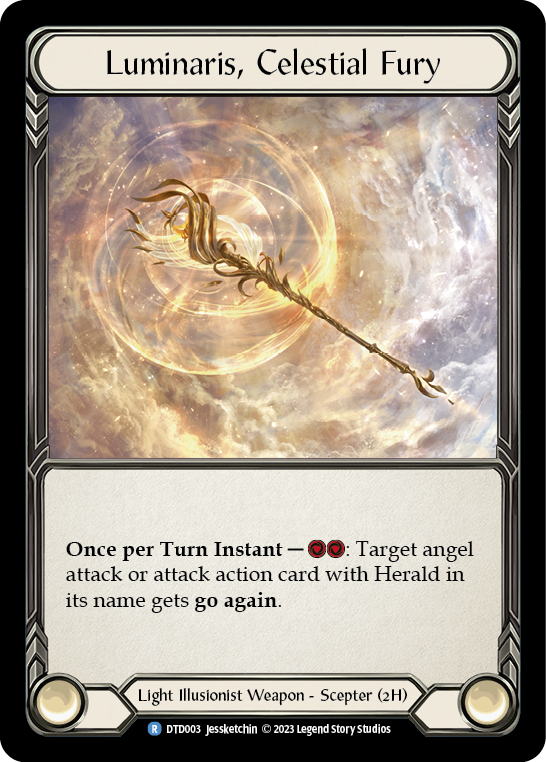
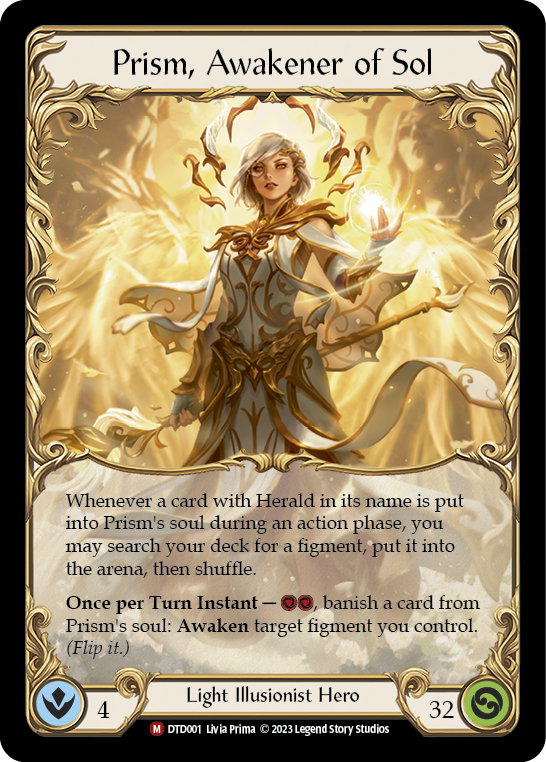
The Concept
Back in August of 2023, I put forth many of the guiding principles for this deck in a theorycrafting article. I'd recommend you hop over to read that, but to summarize the key points:
Heralds are still above-rate cards, and most decks aren't sideboarding 6s like they used to, making phantasm less of a liability.
Figments act as a toolbox of on-hit effects to tack onto Herald attacks.
Angels should be viewed primarily as defensive cards.
We can reliably predict the matchups where our primary Herald/Angel strategy won't work, and sideboard into an Aura plan instead.
Shortly after I put forth my nuPrism tenets, Rogue Theory approached me with a decklist they'd taken to day 2 of a Calling, and I was excited to see many similar elements at play in their build. In truth, there are elements of that list I'd still like to incorporate into mine- such as the use of United We Stand- but I've had insufficient time to test them and the deckbuilding space is tight.
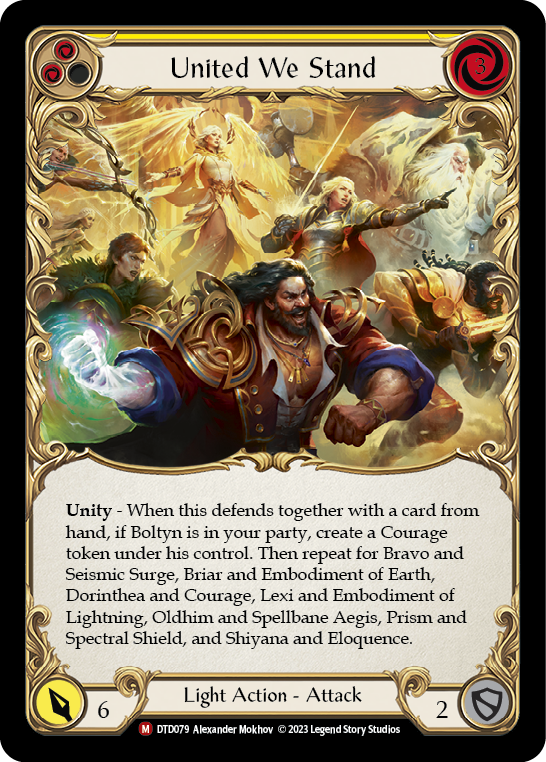
With Luminaris, Angel's Glow on the horizon, this is likely to be the final incarnation of this deck, even if there's development that could have been made on that front.
The Decklist

Weapons
- Luminaris (1)
- Iris of Reality (1)
Equipment
- Dream Weavers (1)
- Empyrean Rapture (1)
- Silent Stilettos (1)
- Nullrune Gloves (1)
- Halo of Illumination (1)
- Phantasmal Footsteps (1)
Loadout
- Celestial Cataclysm (Yellow) (3)
- Brothers in Arms (Blue) (3)
- Figment of Protection (Yellow) (1)
- Figment of Rebirth (Yellow) (1)
- Flicker Trick (Red) (3)
- Herald of Ravages (Blue) (3)
- Herald of Triumph (Red) (3)
- Figment of Triumph (Yellow) (1)
- Herald of Erudition (Yellow) (3)
- Herald of Triumph (Yellow) (2)
- Herald of Triumph (Blue) (3)
- Figment of Judgment (Yellow) (1)
- Figment of Ravages (Yellow) (1)
- Prismatic Shield (Red) (3)
- Wartune Herald (Red) (3)
- Figment of War (Yellow) (1)
- Herald of Ravages (Red) (3)
- Passing Mirage (Blue) (3)
- Figment of Erudition (Yellow) (1)
- Pierce Reality (Blue) (3)
- Herald of Protection (Red) (3)
- Herald of Rebirth (Red) (0)
- Herald of Rebirth (Blue) (3)
- Soul Shield (Yellow) (3)
- Shimmers of Silver (Blue) (3)
- Spears of Surreality (Red) (3)
- Scar for a Scar (Red) (3)
- Haze Bending (Blue) (3)
- Herald of Protection (Blue) (3)
- Wartune Herald (Blue) (3)
This deck aims to do very different things based on the number of cards you're able to carry into your turn. And that ability to present different attack patterns is one of the deck's biggest strengths.
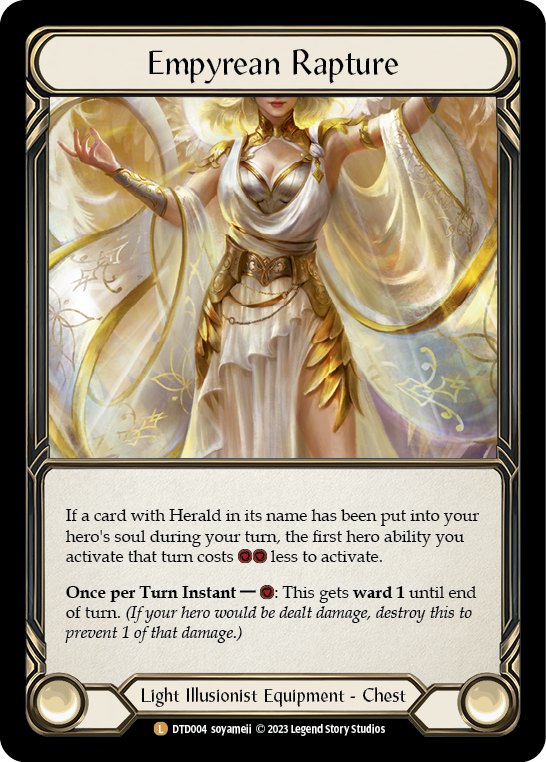
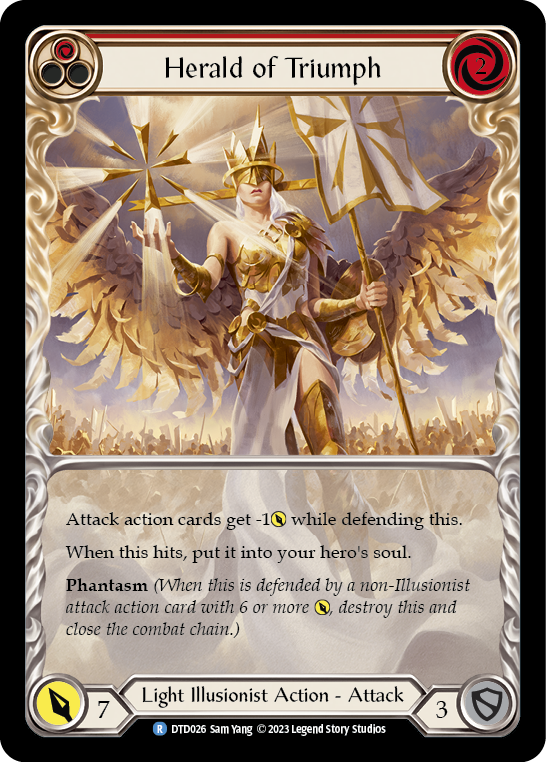
2-card hands usually present a Herald for 6-7 damage, which seeks out a Figment on hit; then we use Empyrean Rapture to flip the Figment for Ward 4 on our next turn, giving us breathing room to carry 3-4 cards into our next attack phase. This is akin to Bravo's hammer turns or Rhinar's club turns: consistent fallback damage that keeps the game going without giving away tempo, but not the sort of play that will get us ahead.
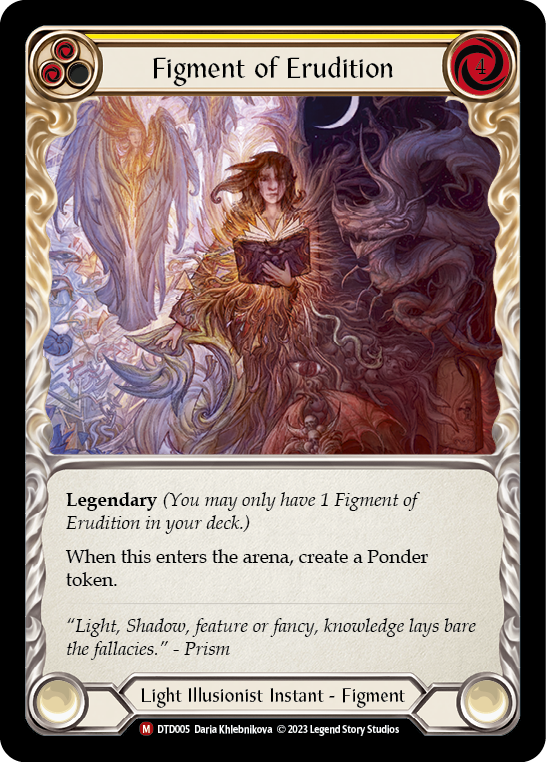
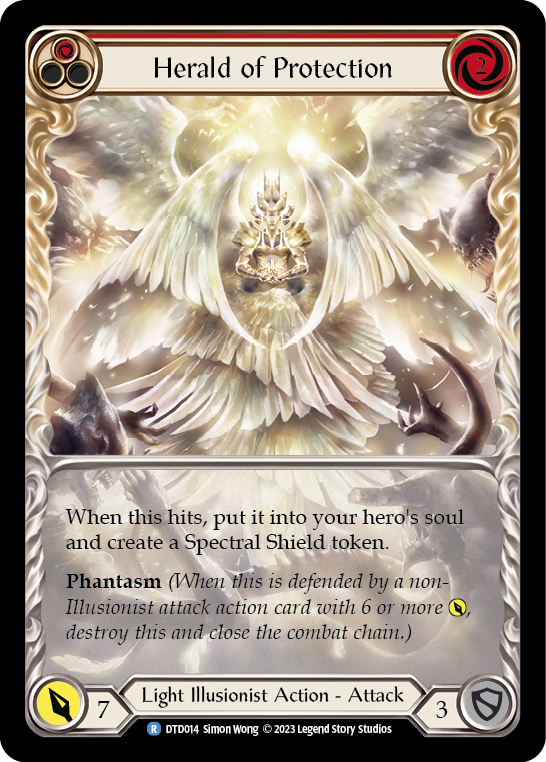
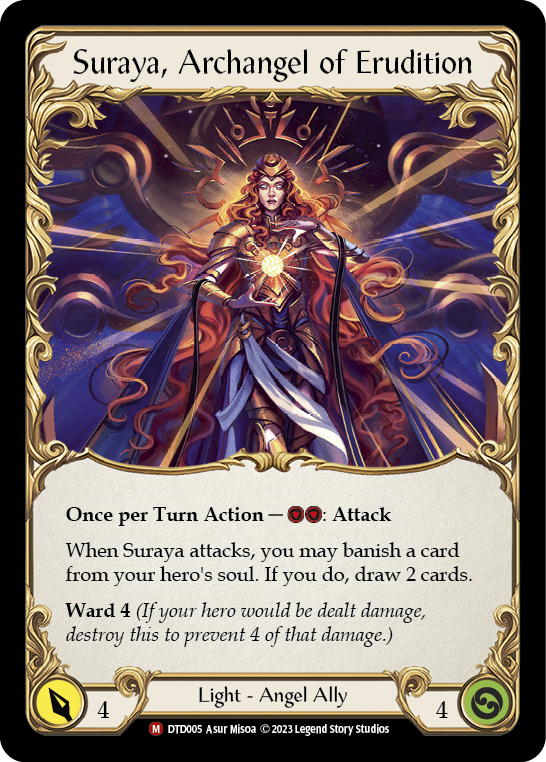
Our 3-card hands run best with a single Herald and two blues. On these turns, we can throw a Herald for 6-7, use Luminaris to give it go again, seek out and flip a Figment, then attack with the new Angel. Don't worry about making the Angel's soul banish happen; you're already getting 16+ value out of this 3-card hand (Herald for 7 + Figment effect for 1 + Angel attack for 4 + Angel Ward 4). In many ways, our deck is optimized for these 3-card hands.

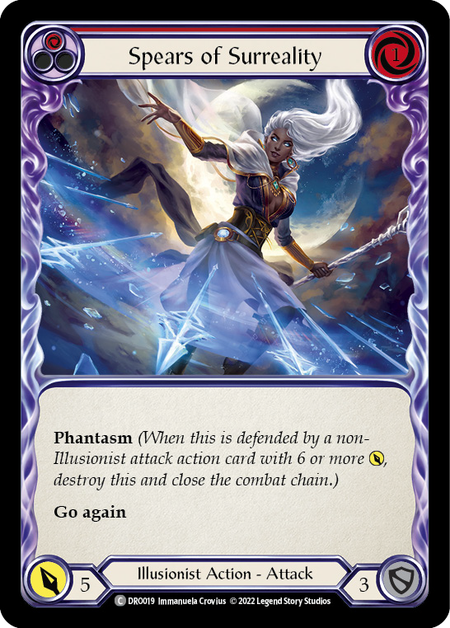
4-card hands are exciting opportunities, but they require particular cards to make the most of. Scar for a Scar and Spears of Surreality have natural go again, and at 0- to 1-cost, segue nicely into a Herald. (Life for a Life is another consideration for the deck; if you don't have a local Dromai population, you can drop the seldom-used Celestial Cataclysms for them.) A hand of Scar into Herald into Angel can net 20 value from 4 cards, all at awkward breakpoints.
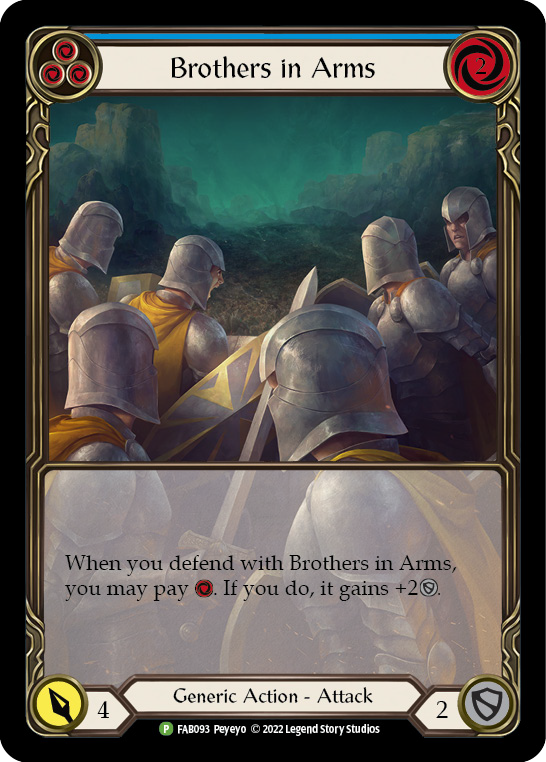
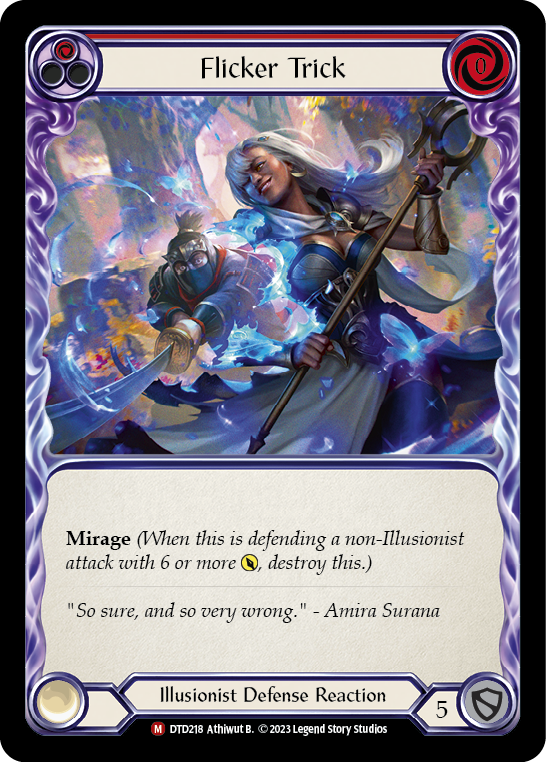
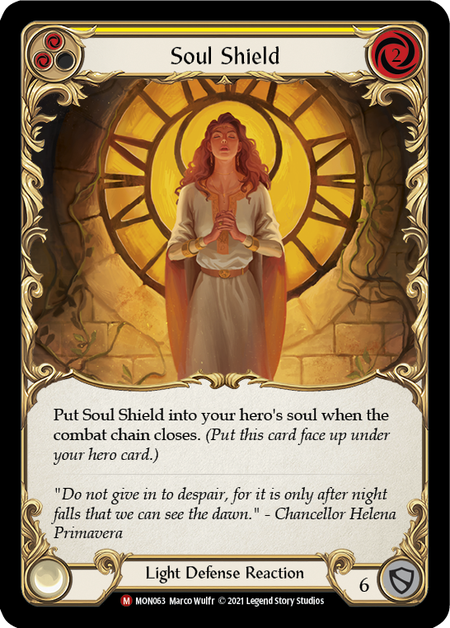
The primary role of our Angels is in pursuit of value, and as such you shouldn't feel bad if they get rushed down as quickly as you summon them. Obviously losing a Ward 4 to a Kodachi feels awful, and should be avoided; but as a general rule, Angels have served their purpose whenever they let you keep 3+ cards in hand.
That said, we're packing plenty of defensive options to keep them from falling needlessly. Flicker Trick is a 0-for-5 defense that we're only siding in against decks unlikely to shatter it. Prismatic Shield guards against go-wide decks that look to make our Ward 4s inefficient. Soul Shield lets us cover up dominated attacks, while Brothers in Arms serves as a 2-card 5 block if we pitch yellow and slide our Phantasmal Footsteps forward - or a 2-card 8 if we pitch blue and flip a Figment on the defensive! These cards give us a variety of breakpoints we can cover - and give us ways to pitch Figments back into the deck!

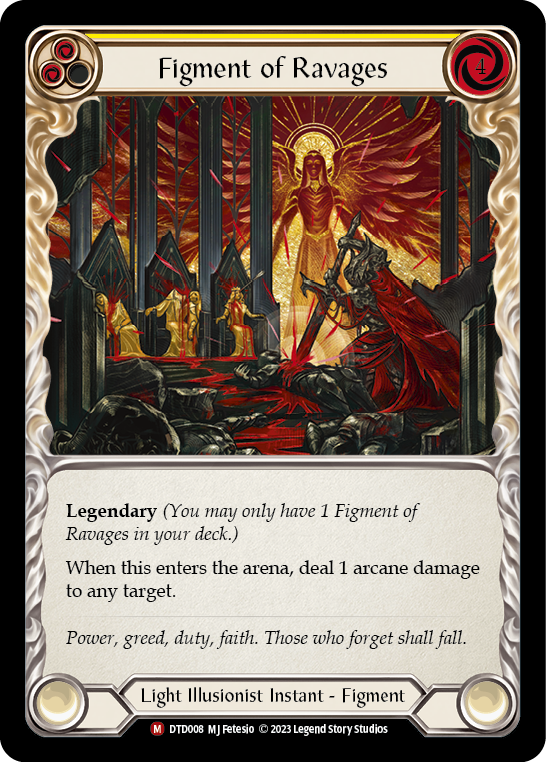
We run 4 Figments in the main deck and another 3 in the sideboard. As you only ever want to play a Figment from deck as an on-hit from your Heralds, it's important not to overstuff your deck, lest you draw the dreaded double-Figment hand. Keep count of how many you have remaining, and try to time their effects for the most impact. I usually pull Protection early on, as that gives us more tools to protect our very first Angel; Ravages I prefer to save for the late game, when an unexpected 1 arcane can spell disaster (or even pop an Ashwing).
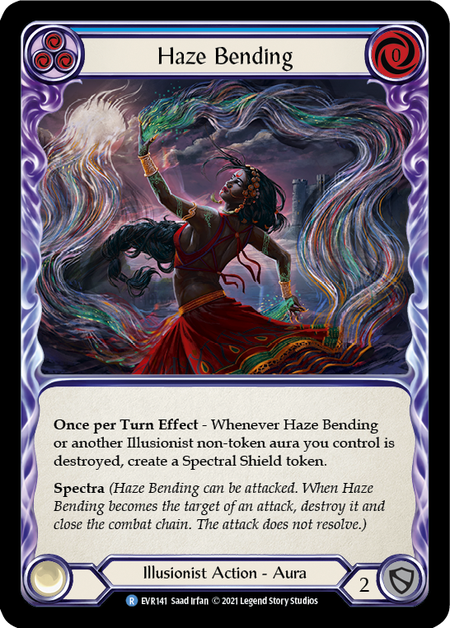
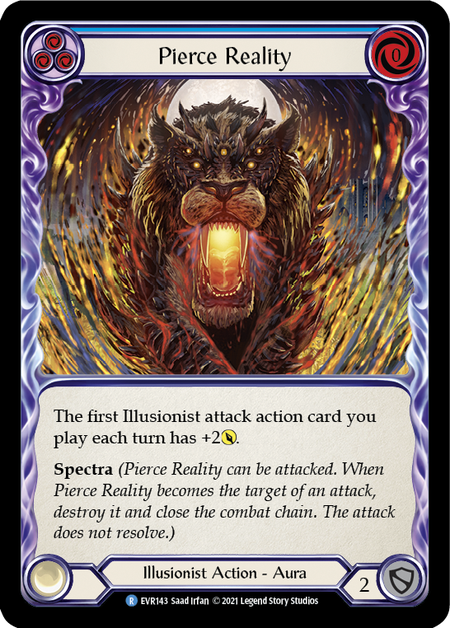
Before we discuss the sideboard strategic shift toward Auras, we should cover the 2 Auras that remain in the deck at all times: Haze Bending and Pierce Reality. Auras serve as single-card plays when we need to block out with the rest of our hand, and pitch cards when we don't. They don't serve essential roles here, but they do contribute as nuisance cards; and due to the prevalence of Aura builds in Prisms of the past, our opponent is likely to over-value them, essentially making them additional defensive tools. Any turn cut short by attacking a Spectra is a turn we can push big damage.
The Aura Pivot
Our obvious Achilles' Heel is found in phantasm, and some heroes (like Brutes, Guardians, and Uzuri) are effortlessly adept at exploiting it. When a Herald gets popped, we have to fall back on Phantasmal Footsteps to continue our turn, nothing goes to soul, and we don't get the Figment. Essentially, everything Celestial Fury does for us is irrelevant.
In those cases, we sideboard in an Aura package with Iris of Reality, and slow our gameplay to an inevitable boardstate goal.
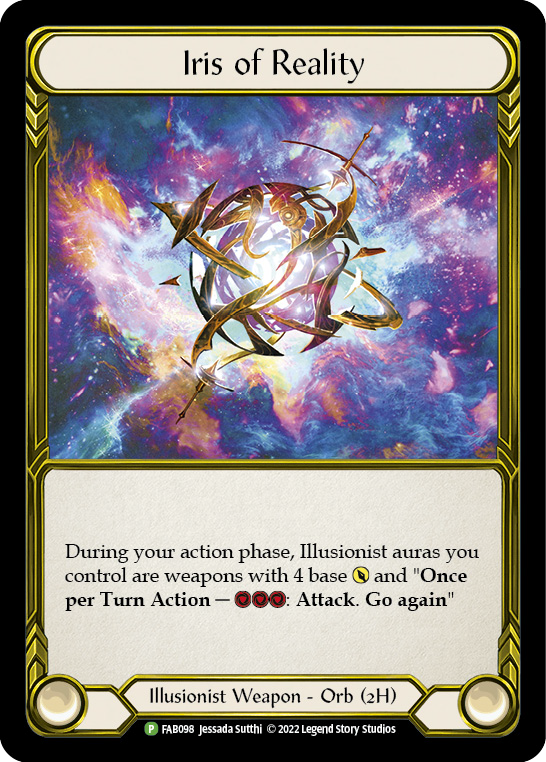
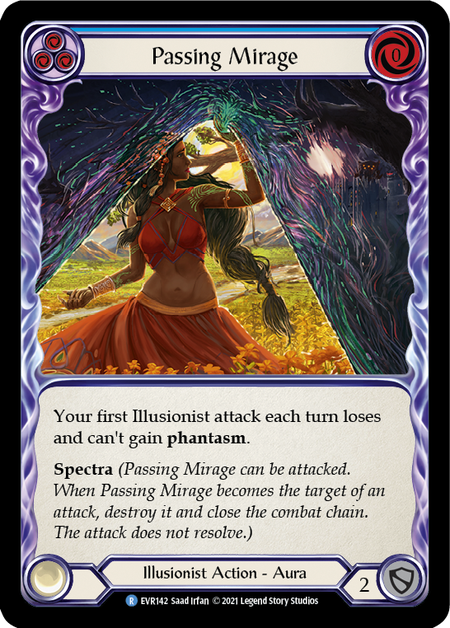
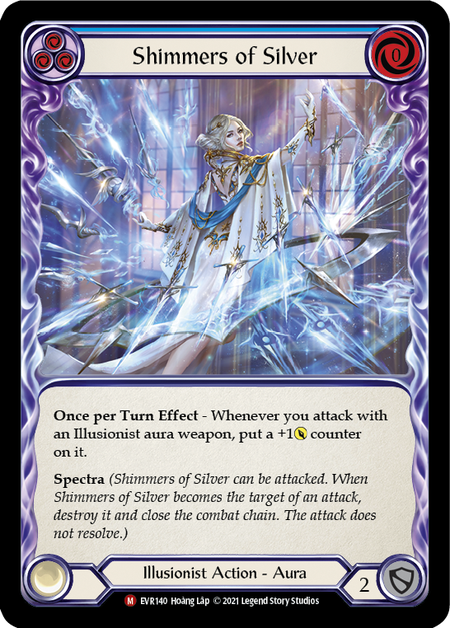
Because the Aura suite is entirely blue, we have to use actions to put them in play- and that should inform your gameplay in these matchups. Block heavily and consider any turn where you played an Aura to be an investment in the future. Eventually, they'll either have ignored them long enough for you to build a board state, or they'll have wasted enough of their big attacks on them that you've gained incremental value through unburdened attack cycles.
But because our deck is built with Figments and Heralds, we can't entirely give that up. As such, the focus of our Aura package is to split their attention and ideally improve both aspects of our deck.
Passing Mirage is extremely important here. This card allows us to throw a Herald without fear of the phantasm liability. (We also have this built into our Dream Weavers, and you should be prepared to use them early while you wait for Passing Mirage to come up.)
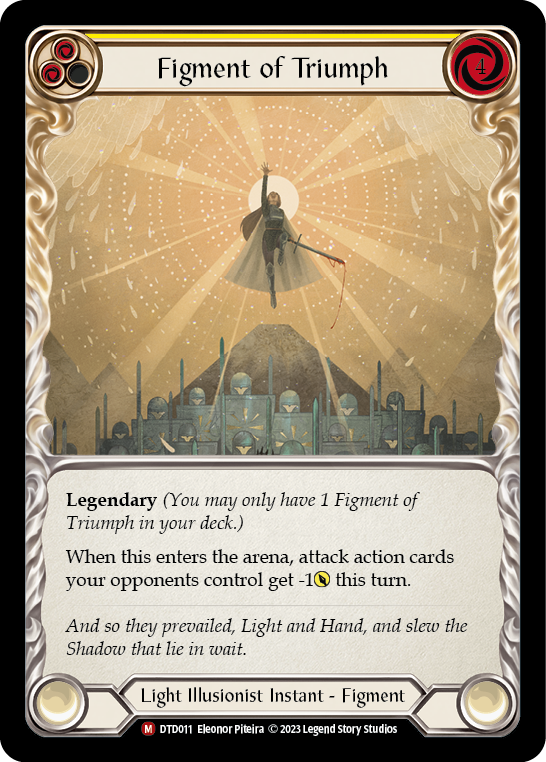

While 6s are common in Uzuri and Brute decks, 7s are not; and as such, we crib hard on Herald of Triumph to get our Figments out and Angels flipped. From a 4-card hand, you can also play out Figment of Triumph by pitching a 2nd blue to force your Herald attack through.
Quick Matchups
Our sideboard consists of:
-Celestial Cataclysm x3
-Figment of Judgment
-Figment of Rebirth
-Figment of War
-Flicker Trick x3
-Passing Mirage x3
-Prismatic Shield (R) x3
-Shimmers of Silver x3
-Soul Shield x3
That leaves our core deck at 52; every game we need to add 8 cards. That said, it's okay to go slightly above 60 in some matchups, especially as we'll be pulling our Figments directly from the deck.
When We Can Do What We Want
Our ideal add-ins are Soul Shield x3, Flicker Trick x3, Figment of War, and Figment of Rebirth. With 6 Figments, we're unlikely to run out before we've closed the game; Soul Shield lets us build up soul, rather than the 1:1 exchange that often happens when a Herald hits; and Flicker Trick is an incredibly efficient 1-card block.
I consider the following matchups to be ones where we can consider ourselves 'in charge', and build the deck the way we want to:
Arakni
Teklovossen
Dash i/o
Riptide
Azalea
Viserai
Boltyn
Dorinthea
When Phantasm Is a Liability
These matchups involve a lot of 6s, and we need to plan for our Phantasms to pop fairly often. We trade out Luminaris, Celestial Fury for Iris of Reality, then run Shimmers of Silver x3, Passing Mirage x3, and Soul Shield x3. If the enemy is Shadow, I side in Figment of Judgment as well. That puts us at a 61-62 card deck.
The following matchups put our Heralds at risk:
Uzuri
Rhinar
Levia
Bravo
Vynnset
When Angels Take Heavy Fire
The sideboard for a wide matchup includes Figment of Rebirth, Figment of War, Prismatic Shield x3, and Flicker Trick x3. In these games, you may want to delay flipping your Figments until the Angel becomes necessary: on the defensive, Prism can essentially pitch a yellow for a Ward 4 at Instant speed.
The following matchups are likely to go wide and cut into the efficiency of our Angel game:
Dash
Maxx Nitro
Fai
Katsu
Special Circumstances
For the Runeblades, we didn't really make any accommodations for Arcane damage. But when facing Kano, we absolutely have to compromise. In this matchup, we equip Nullrune Gloves and Silent Stilettos for the Arcane Barrier they provide. As your defense reactions are useless, we side in Shimmers of Silver x3 and Passing Mirage x3, which are blue pitches if nothing else. Figment of War and Figment of Rebirth round out the improvised roster. There's an argument to be made for pivoting to the Aura plan in this matchup, as Kano struggles with Spectra, but it really depends on how you want to play the match. Personally, I prefer to push damage quickly, rather than risk Kano assembling his combo.
Dromai and Prism are two different heroes who require different strategies to counter, but the sideboard in both cases is the same. This is the matchup where we finally use our Celestial Cataclysm x3, along with Soul Shield x3 and Flicker Trick x3. Feel free to add Figment of War and Figment of Rebirth if you expect the game to go long.
The Future for Prism
I don't expect this to be the decklist for Prism, Awakener of Sol next month. We're working especially hard here to make things happen that Angel's Glow will effortlessly facilitate. But the decklist above has served me well at Armories, and moreover has proven to me that LSS had a concept that they believed would work - even if it never stood a chance in the real world of competitive FAB.
I fully expect transference from the skills I developed with this deck to the gameplay Angel's Glow will facilitate. Time was not wasted on this build, even if Celestial Fury never sees play again. And if you'd like to take Celestial Fury for a few laps before the next chapter of Prism's story, this is a great list to work from.




